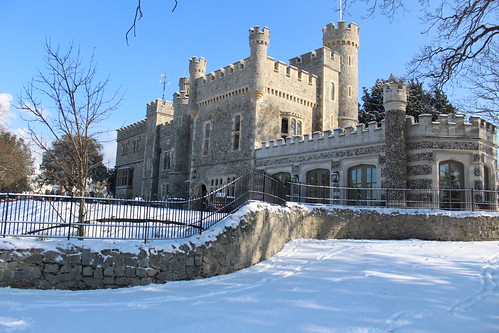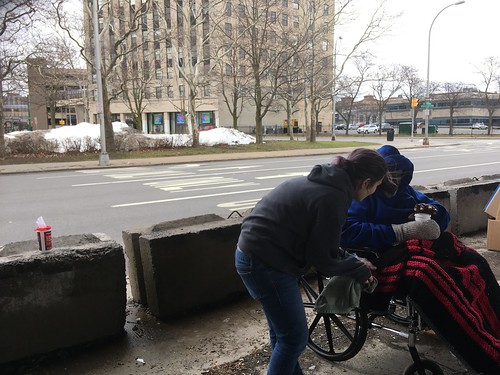Lties have ongoing atlas efforts throughout the human Doravirine site anatomy also as inside a variety of other organisms. Additionally, industrial entities and a few study groups supply additional general “whole body” atlases that target broad audiences which includes medical education and public outreach. An instance of open and less specialized anatomy atlas improvement is BodyPartsD (Mitsuhashi et al). BodyPartsD is an ongoing opensource PubMed ID:https://www.ncbi.nlm.nih.gov/pubmed/14712350 and opendata project to develop D structural segments of a wholebody human male based on a mm MRI scan of a volunteer. Healthcare concepts in the Foundational Model of Anatomy (FMA; Rosse and Mejino,) ontology were employed to define anatomical segments, which had been then modeled by illustrators. The resulting models and systems are offered to view  on the net and for download for alternative purposes including D printing. Our perform with digital interactive anatomy atlases dates greater than years (Shenton et al). We’ve got produced several anatomy atlases consisting of supply radiology photos, segmented voxel maps labeling various anatomical structures, polygonal models of those structures, all arranged within a hierarchical organization. Examples of those atlases include things like an MRIderived neuroanatomic atlas also as knee , abdominal and head and neck atlases based on CT imaging. Until recently, LED209 nonetheless, these atlases have been developed in a closed approach by a small number of folks, with only the resulting data made available. http:www.spl.harvard.edupublicationsitemview http:www.spl.harvard.edupublicationsitemview http:www.spl.harvard.edupublicationsitemview http:www.spl.harvard.edupublicationsitemviewFrontiers in Neuroinformatics MarchHalle et al.The Open Anatomy BrowserSeparate in the atlases themselves, we have also created atlas viewing tools. Mainly because our atlases are based on tomographic data, the viewers possess the capability to display image slices and threedimensional views of anatomic structures. These tools contain among the list of earliest webbased visual anatomy applications making use of Java (Golland et al) In recent years, we have primarily utilised D Slicer to author and view atlases, which prevents us from reaching all however the most dedicated members on the public. The Open Anatomy Browser (OABrowser for quick) described within this short article is actually a webbrowser primarily based anatomy atlas viewer originally developed as a test bed for evaluating ongoing draft versions from the HAWG information format, and as a car for exploring interoperability involving atlases. We’ve adopted and extended the operate of HAWG (especially, the s and drafts in the January HAWG meeting in Boston) to produce a practical anatomy viewer application. Our technology strategy is related to BrainBrowser (Sherif et al), but with HAWG’s data format as a foundation for interoperability. In comparison to BrainBrowser, we have selected to tailor OABrowser extra as a standalone application appropriate for use by a wide audience. OABrowser also involves novel collaborative features like globallyshared bookmarks and dynamic shared views. The OABrowser is part of our work to open our atlas improvement pipeline and encourage neighborhood participation and code reuse. OABrowser and our bigger atlas efforts are funded by means of the Neuroimage Analysis Center (NAC), an NIHsponsored biomedical resource center. Our anatomy atlases are utilized by different NAC internal investigation efforts and also serve as a method to disseminate the outcomes on the Center’s biomedical analysis. Although NAC is focused especially on neuroimaging, our.Lties have ongoing atlas efforts throughout the human anatomy also as within a variety of other organisms. In addition, commercial entities and a few study groups offer much more basic “whole body” atlases that target broad audiences including healthcare education and public outreach. An example of open and less specialized anatomy atlas improvement is BodyPartsD (Mitsuhashi et al). BodyPartsD is definitely an ongoing opensource PubMed ID:https://www.ncbi.nlm.nih.gov/pubmed/14712350 and opendata project to make D structural segments of a wholebody human male primarily based on a mm MRI scan of a volunteer. Health-related ideas in the Foundational Model of Anatomy (FMA; Rosse and Mejino,) ontology have been utilized to define anatomical segments, which had been then modeled by illustrators. The resulting models and systems are offered to view on the net and for download for option purposes which include D printing. Our operate with digital interactive anatomy atlases dates more than years (Shenton et al). We’ve created several anatomy atlases consisting of supply radiology photos, segmented voxel maps labeling various anatomical structures, polygonal models of these structures, all arranged within a hierarchical organization. Examples of these atlases consist of an MRIderived neuroanatomic atlas too as knee , abdominal and head and neck atlases primarily based on CT imaging. Till lately, having said that, these atlases happen to be developed within a closed method by a compact quantity of persons, with only the resulting data created out there. http:www.spl.harvard.edupublicationsitemview http:www.spl.harvard.edupublicationsitemview http:www.spl.harvard.edupublicationsitemview http:www.spl.harvard.edupublicationsitemviewFrontiers in Neuroinformatics MarchHalle et al.The Open Anatomy BrowserSeparate in the atlases themselves, we have also developed atlas viewing tools. Due to the fact our atlases are primarily based on tomographic data, the viewers have the ability to display image slices and threedimensional views of anatomic structures. These tools include things like one of the earliest webbased visual anatomy applications making use of Java (Golland et al) In recent years, we’ve mostly applied D Slicer to author and view atlases, which prevents us from reaching all but the most devoted members of your public. The Open Anatomy Browser (OABrowser for brief) described in this report is actually a webbrowser based anatomy atlas viewer originally designed as a test bed for evaluating ongoing draft versions from the HAWG data format, and as a automobile for exploring interoperability involving atlases. We have adopted and extended the perform of HAWG (especially, the s and drafts in the January HAWG meeting in Boston) to produce a practical anatomy viewer application. Our technology approach is equivalent to BrainBrowser (Sherif et al), but with HAWG’s information format as a foundation for interoperability. In comparison with BrainBrowser, we’ve chosen to tailor OABrowser more as a standalone application appropriate for use by
on the net and for download for alternative purposes including D printing. Our perform with digital interactive anatomy atlases dates greater than years (Shenton et al). We’ve got produced several anatomy atlases consisting of supply radiology photos, segmented voxel maps labeling various anatomical structures, polygonal models of those structures, all arranged within a hierarchical organization. Examples of those atlases include things like an MRIderived neuroanatomic atlas also as knee , abdominal and head and neck atlases based on CT imaging. Until recently, LED209 nonetheless, these atlases have been developed in a closed approach by a small number of folks, with only the resulting data made available. http:www.spl.harvard.edupublicationsitemview http:www.spl.harvard.edupublicationsitemview http:www.spl.harvard.edupublicationsitemview http:www.spl.harvard.edupublicationsitemviewFrontiers in Neuroinformatics MarchHalle et al.The Open Anatomy BrowserSeparate in the atlases themselves, we have also created atlas viewing tools. Mainly because our atlases are based on tomographic data, the viewers possess the capability to display image slices and threedimensional views of anatomic structures. These tools contain among the list of earliest webbased visual anatomy applications making use of Java (Golland et al) In recent years, we have primarily utilised D Slicer to author and view atlases, which prevents us from reaching all however the most dedicated members on the public. The Open Anatomy Browser (OABrowser for quick) described within this short article is actually a webbrowser primarily based anatomy atlas viewer originally developed as a test bed for evaluating ongoing draft versions from the HAWG information format, and as a car for exploring interoperability involving atlases. We’ve adopted and extended the operate of HAWG (especially, the s and drafts in the January HAWG meeting in Boston) to produce a practical anatomy viewer application. Our technology strategy is related to BrainBrowser (Sherif et al), but with HAWG’s data format as a foundation for interoperability. In comparison to BrainBrowser, we have selected to tailor OABrowser extra as a standalone application appropriate for use by a wide audience. OABrowser also involves novel collaborative features like globallyshared bookmarks and dynamic shared views. The OABrowser is part of our work to open our atlas improvement pipeline and encourage neighborhood participation and code reuse. OABrowser and our bigger atlas efforts are funded by means of the Neuroimage Analysis Center (NAC), an NIHsponsored biomedical resource center. Our anatomy atlases are utilized by different NAC internal investigation efforts and also serve as a method to disseminate the outcomes on the Center’s biomedical analysis. Although NAC is focused especially on neuroimaging, our.Lties have ongoing atlas efforts throughout the human anatomy also as within a variety of other organisms. In addition, commercial entities and a few study groups offer much more basic “whole body” atlases that target broad audiences including healthcare education and public outreach. An example of open and less specialized anatomy atlas improvement is BodyPartsD (Mitsuhashi et al). BodyPartsD is definitely an ongoing opensource PubMed ID:https://www.ncbi.nlm.nih.gov/pubmed/14712350 and opendata project to make D structural segments of a wholebody human male primarily based on a mm MRI scan of a volunteer. Health-related ideas in the Foundational Model of Anatomy (FMA; Rosse and Mejino,) ontology have been utilized to define anatomical segments, which had been then modeled by illustrators. The resulting models and systems are offered to view on the net and for download for option purposes which include D printing. Our operate with digital interactive anatomy atlases dates more than years (Shenton et al). We’ve created several anatomy atlases consisting of supply radiology photos, segmented voxel maps labeling various anatomical structures, polygonal models of these structures, all arranged within a hierarchical organization. Examples of these atlases consist of an MRIderived neuroanatomic atlas too as knee , abdominal and head and neck atlases primarily based on CT imaging. Till lately, having said that, these atlases happen to be developed within a closed method by a compact quantity of persons, with only the resulting data created out there. http:www.spl.harvard.edupublicationsitemview http:www.spl.harvard.edupublicationsitemview http:www.spl.harvard.edupublicationsitemview http:www.spl.harvard.edupublicationsitemviewFrontiers in Neuroinformatics MarchHalle et al.The Open Anatomy BrowserSeparate in the atlases themselves, we have also developed atlas viewing tools. Due to the fact our atlases are primarily based on tomographic data, the viewers have the ability to display image slices and threedimensional views of anatomic structures. These tools include things like one of the earliest webbased visual anatomy applications making use of Java (Golland et al) In recent years, we’ve mostly applied D Slicer to author and view atlases, which prevents us from reaching all but the most devoted members of your public. The Open Anatomy Browser (OABrowser for brief) described in this report is actually a webbrowser based anatomy atlas viewer originally designed as a test bed for evaluating ongoing draft versions from the HAWG data format, and as a automobile for exploring interoperability involving atlases. We have adopted and extended the perform of HAWG (especially, the s and drafts in the January HAWG meeting in Boston) to produce a practical anatomy viewer application. Our technology approach is equivalent to BrainBrowser (Sherif et al), but with HAWG’s information format as a foundation for interoperability. In comparison with BrainBrowser, we’ve chosen to tailor OABrowser more as a standalone application appropriate for use by  a wide audience. OABrowser also includes novel collaborative features including globallyshared bookmarks and dynamic shared views. The OABrowser is part of our effort to open our atlas development pipeline and encourage neighborhood participation and code reuse. OABrowser and our bigger atlas efforts are funded via the Neuroimage Analysis Center (NAC), an NIHsponsored biomedical resource center. Our anatomy atlases are applied by numerous NAC internal analysis efforts and also serve as a technique to disseminate the results on the Center’s biomedical research. Whilst NAC is focused specifically on neuroimaging, our.
a wide audience. OABrowser also includes novel collaborative features including globallyshared bookmarks and dynamic shared views. The OABrowser is part of our effort to open our atlas development pipeline and encourage neighborhood participation and code reuse. OABrowser and our bigger atlas efforts are funded via the Neuroimage Analysis Center (NAC), an NIHsponsored biomedical resource center. Our anatomy atlases are applied by numerous NAC internal analysis efforts and also serve as a technique to disseminate the results on the Center’s biomedical research. Whilst NAC is focused specifically on neuroimaging, our.
